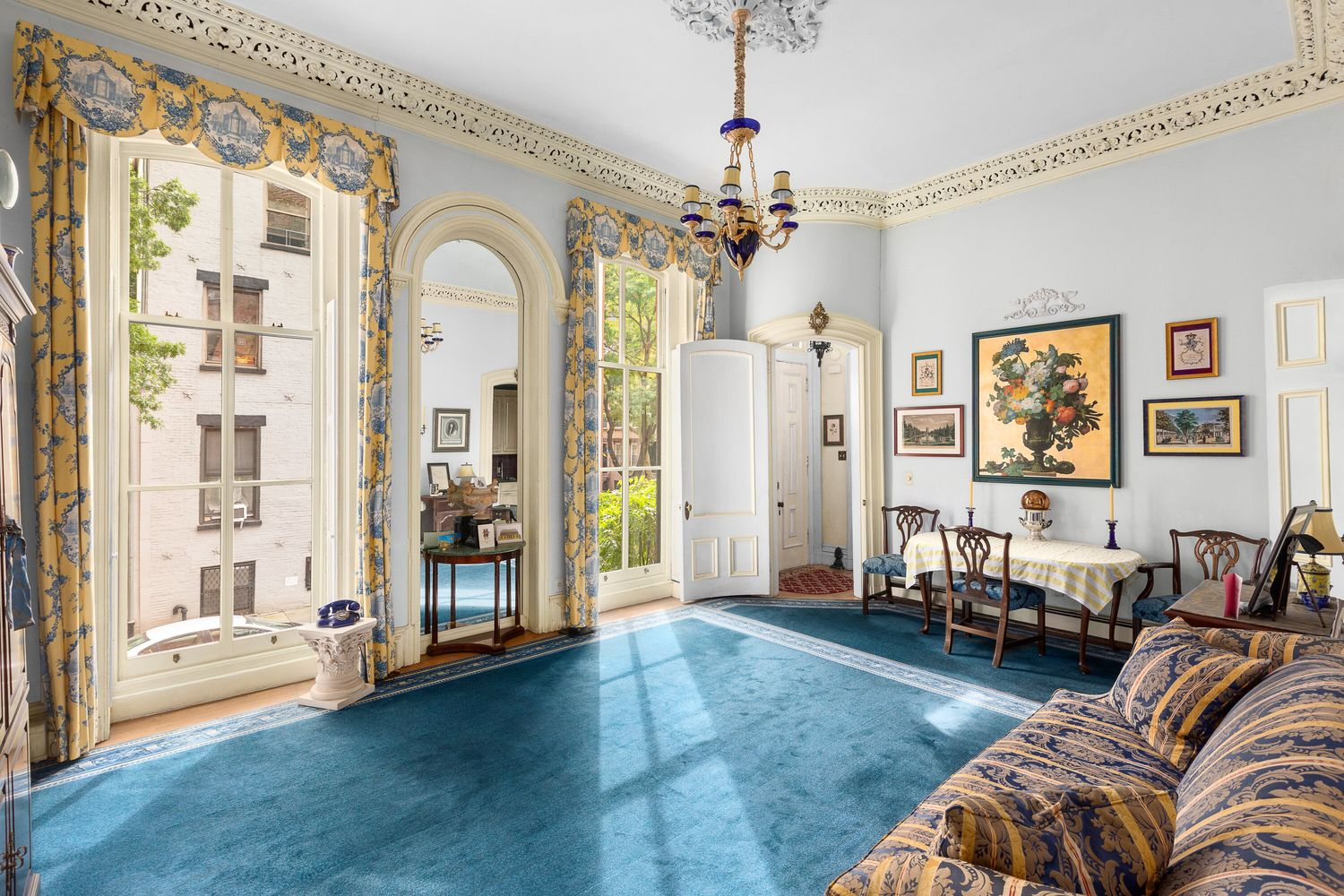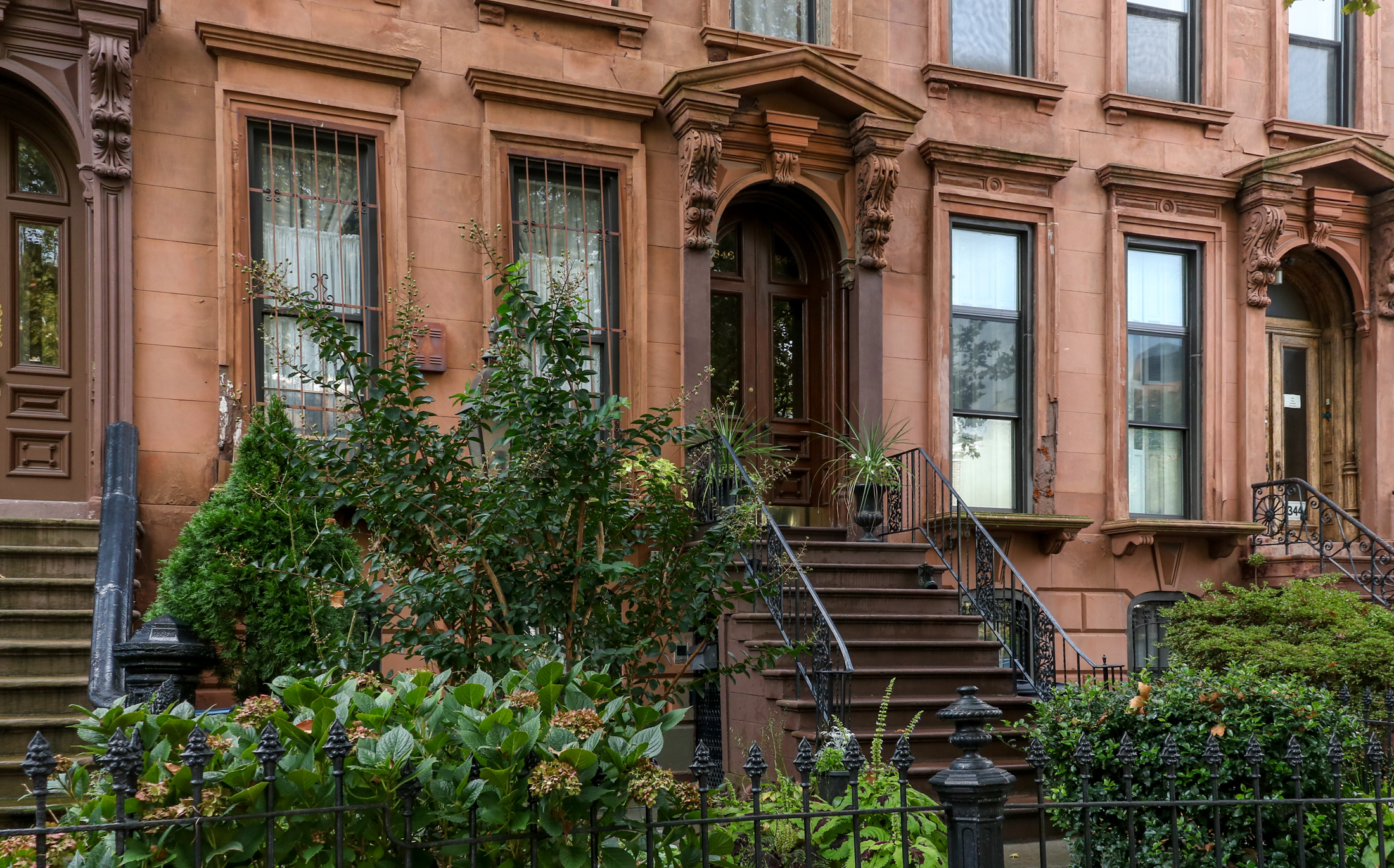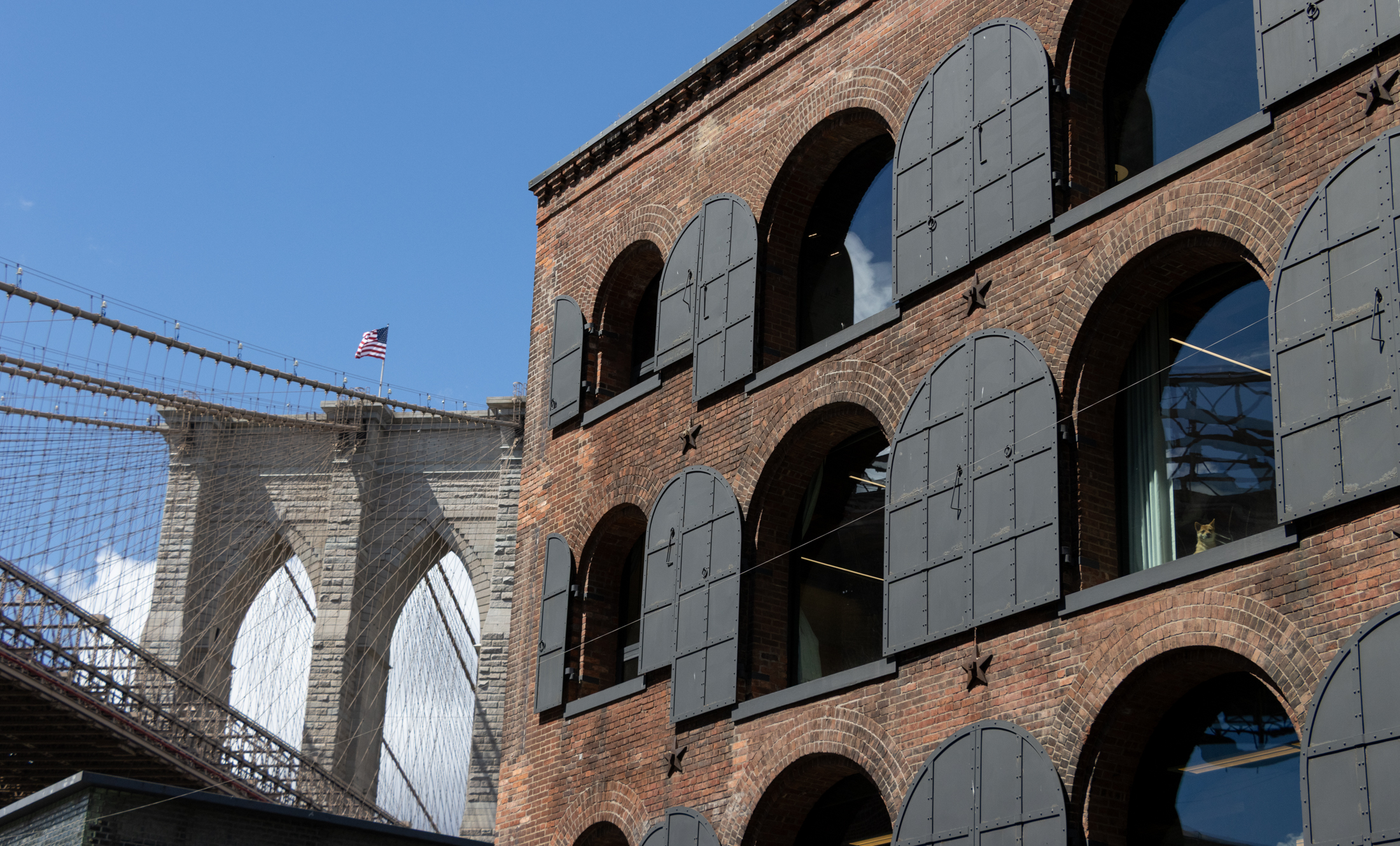Details on the Borough Hall Skyscraper District
The creation of the Borough Hall Skyscraper District had been in the works for at least five years (we reported on it being discussed at a Brooklyn Heights Association meeting back in 2005) before it was officially presented at a Landmarks hearing on October 26. But we had yet to see a proposed map of…


The creation of the Borough Hall Skyscraper District had been in the works for at least five years (we reported on it being discussed at a Brooklyn Heights Association meeting back in 2005) before it was officially presented at a Landmarks hearing on October 26. But we had yet to see a proposed map of the district until Community Board 2 sent out the materials yesterday for next Tuesday’s meeting. (Turns out it’s been available on the LPC site for a while though.) In addition to running the map above, we’ve cut-and-pasted the text of the district description that was also included in the mailing below. We’d be surprised if it wasn’t ultimately approved, but, as Crain’s and The Post have pointed out, not everyone is wild about the idea.
In the first half of the nineteenth century, especially following the chartering of the City of Brooklyn in 1834 and the completion of its new City Hall in 1848, a distinct civic and commercial center began to crystallize along the eastern edge of residential Brooklyn Heights. As the city continued to grow during the 1850s and 1860s—in the process becoming the nation’s third-most populous urban area—the streets immediately adjacent to City Hall were taken over almost exclusively by businesses.
In the later decades of the nineteenth century transportation improvements further encouraged commercial development in the area. The Brooklyn Bridge, which opened in 1883, directly connected the neighborhood with Manhattan’s financial center. Soon newer—and often much taller—buildings began to rise on the surrounding streets, including the impressive Romanesque-Revival Franklin Building that survives at 186 Remsen Street.
Brooklyn’s commercial heart continued to grow in the years following the consolidation of Great New York in 1898. The Temple Bar Building, for example, was erected in 1901 at the corner of Court and Joralemon Streets and was intended to attract the city’s leading lawyers to the borough. Other office buildings soon followed including the speculative venture at 32 Court Street that was completed in 1918.
The conception and construction of the Brooklyn Municipal Building—originally planned in 1909 but not completed until 1927—lead many to speculate that the area surrounding Brooklyn’s Borough Hall would become a financial center to rival that of Lower Manhattan. The area’s tallest and most architecturally intricate skyscrapers were erected during this period, particularly the stately, 35-story Montague-Court Building at 16 Court Street and the handsomely detailed Brooklyn Chamber of Commerce Building at 75 Livingston Street, both completed in 1927.
The proposed Borough Hall Skyscraper Historic District, comprising approximately 20
properties, is characterized primarily by tall commercial buildings erected in the late nineteenth and early twentieth centuries. Designed in a range of styles from the Romanesque-Revival to the Beaux-Arts to the Modern, the structures in the study area represent the work of an impressive group of architects including Helmle, Huberty & Hudswell; McKenzie, Voorhees & Gmelin; George L. Morse; the Parfitt Brothers; Schwartz & Gross; H. Craig Severence; and Starrett & Van Vleck. It contains many of the borough’s most architecturally distinguished business buildings, as well as its two most significant civic structures—the Brooklyn Municipal Building and the individually-designated Brooklyn Borough Hall.





I agree with both of your sentiments. New York to an extent, needs to grow outward and create infill (as LA is attempting to do with it’s sprawl) especially with the inner ring suburbs. That includes Eastern Queens, parts of Nassau county, Yonkers, as well as creating new development in Newark and Jersey City. New centers of commerce need to develop and grow too. CitiGroup’s lone tower in Queens desperately needs accompanying office, retail, and other high-rise space to make it a viable area, much akin to Metrotech and downtown Brooklyn. As of now, LIC still retains some of it’s older industries and is a trendy place for new real estate but is otherwise a weak limb that relies very much on Manhattan. It’s a commuter hub at best.
And why not channel growth into far-flung neighborhoods? Canarsie has plenty of waterfront views of the bay and would probably do well to see new development in what is otherwise a very suburban area with weak transit. Sure NIMBYS as bad as me will protest but even I can settle for a post-war rancher being knocked down so a larger commercial or financial complex could be developed near it’s waterfront. The same could go for Fordham Road in the Bronx which sees a similar rate of foot traffic as Penn Station does in midtown. Some of these areas would happily benefit from new infrastructure and office space. Even Coney Island could benefit from a decent albeit small skyscraper or two if it was designed right and within the context of it’s surroundings. That’s why the New York of the future needs to have several commercial centers, not just downtown Manhattan, midtown, and DoBro, and the dozen or so bustling Manhattan commerce spots (SoHo, Villages, etc) New York is too big a city to not do this.
So it’s really an issue of infill I think more so than knocking down walk-ups. That and well, those buildings you mentioned on Prospect West are mostly apartment houses, not small 2 story brownstones but a complex in their own right.
WB’er;
Well then I don’t think we’re far off. I’m not advocating massive upzoning. I’m advocating for a smarter application of preservation laws. I would feel alot better about the whole thing if someone would develop a criteria for what should be preserved, and what shouldn’t. I’ve yet to find it on this site.
Let me return to an example that I always cite: Prospect Park West from about 11th Street to 15th Street.This strip could become one of the crown jewels of Brooklyn – our 5th Ave. It faces our jewel of a park, and is within walking distance of the 15th Street subway stop. If things were right, development would be allowed to take place there – as happened on its northern stretch in the 20’s. Nice, upscale 12=story buildings facing the park. Given that this is premium real estate, better-designed buildings would go up.
What do we have there instead, thanks to our landmark laws? Beautiful but obsolete walk-up buildings. Take note that when folks talk about the premium park blocks, they always mean the brownstones between PPW and 8th Ave, never the walk-ups on PPW itself.
It seems to me that the model followed for the Upper West Side is a good one: preserve the brownstones on the side streets, and allow larger buildings on the broad avenues.
Finally, I agree with you that some of the inner suburbs should be upzoned, due to their transit connections.
Have a good weekend.
My point was that the density of brownstone Brooklyn is pretty high – much higher than Flatlands. That density is there because Crown Heights developed as a transit community (street cars and later subways), whereas Flatlands is further from the core and poorly served by public transit. But you don’t need 10 or 20 or 30-story apartment houses to achieve density – you have it at the scale of development that has occurred historically (and that is more or less what is zoned now).
I’m not advocating for preserving everything, but I do think that preservation is one part of a policy of smart growth. “Natural progression” doesn’t exist – the city has been regulating building density, scale, design and construction since the 1860s. Zoning is about to hit its 100th anniversary. I also am firmly in the camp that preservation shouldn’t stop growth – preservation is about managing change, not stopping it (and I practice what I preach).
You are right that the percentage is much higher closer to the historic urban core. Of course that is because that’s where the most historic buildings are!
The green argument is based in reality. If you take into account the energy that goes into a building (or a window), the energy it costs to demolish, the environmental impact of disposing of the generated waste you have a substantial cost right there. Then add in the energy to extract the raw materials for the new building (or aluminum window), the energy costs of manufacturing, transportation and construction, and suddenly it makes sense to rehab the building (or restore the window). The energy savings of the new are outweighed by the energy costs. And a big factor in the energy consumption of new construction IS transportation.
I’m also not suggesting that we channel growth to the outer ring over the core. (Though I do think that the inner suburbs, which are well served by regional rail, could sustain a much higher density – a huge advantage over exurban development, which is a huge waste.)
One more thing.
This notion that preservation is green because it spares the materials and energy of knock-down and construction is just not based on reality.
I suggest that folks examine how energy is consumed in this country. Transportation is far and away larger than construction. Hence, my point: to channel growth to the outer rings of the city in order to preseve townhouses in the inner circle is not green. It results in more energy and time expended on transportation.
WB’er;
Sorry, but I found your post to be somewhat disingenuous, on several points:
-nowhere do I advocate for the wholesale tear-down of brownstones. I am simply advocating that the city be allowed to evolve in its natural progression. For all of its glorious housing stock, Park Slope, where I live, has some obsolete walk-ups with narrow, railroad apartments. What’s the point of preserving these buildings?
-I also do not advocate for 30 story towers everywhere. How about, however, taller buildings on the avenues, as has happened on the UWS? PPW has some obsolete walk-ups that would be perfect for 12-story buildings.
-Your transit argument is completely off. The simple fact is that brownstone areas like Crown Heights are much better served by subways than Flatlands. We live in a city that is expected to grow by 1 million people in the coming decades. Moreover, if we do not have enough transit capacity, as you state, it makes a MORE compelling case to channel growth to closer-in areas. Given the current fiscal realities, which is more apt to ACTUALLY happen: building a new subway line to Crown Heights, or Canarsie?
The 2.7% figure (% of stock preserved) is a canard. Take away Staten Island, Queens and the Bronx where virtually NONE of this preserved stock exists. Take away the outer belt of Brooklyn, from Bay Ridge to East New York where this stock of housing also does not exist. NOW what percentage of the housing stock of inner Brooklyn are we talking about? Just take a look at Brooklyn’s historic districts: they form a solid ring around downtown Brooklyn.
I stand by my statements regarding the development of cities. You took my statement to mean continuous redevelopment of entire areas. That is not what I said. I am aware that cities and areas develop in spurts. Historic districts stop this natural evolution.
Indeed, and even those transit strapped areas like Carnarsie and Flatbush still have access to subways and buses. Not to mention, they were developed with streetcars and elevated rail in mind. However they are transit strapped now because cars overtook public transit after the war, and little resources were allocated to public transit in part because of our good slum cleaning friend Robert Moses who as we know catered to highway construction, not rail.
So, we really don’t need to go knocking down townhouses and low-scale apartment buildings for massive towers, especially for the mere sake of them being close to the subway. It’s not smart planning and it makes residents not apart of their respective neighborhood but commuters latched to their subway. Do you want more projects to scar the city with dingy patches of grass just because they can warehouse more people into them and be closer to a supposed subway?
If we are to ever build New York’s future, development has to grow in all parts of every borough, as does more responsible transit funding. But more importantly, we don’t need scores of 30 story residential buildings in a townhouse-laden low-rise neighborhood. It’s why people prefer New York (despite it’s horrid costs) as it blends high rise architecture with smaller-street level buildings.
Moreover, walk through Battery Park City and then compare it to Cobble Hill, or even Williamsburg, or any low-rise residential enclave anywhere in New York. Minus the harbor views of Battery Park, you get wind-swept plazas and a much more suburban lifestyle of sorts. There’s not much community and it feels all so desolate and remote from the rest of the city.
I mean, that’s why I love preservation. It is about enhancing communities too and buildings play a big role in that. Your average high-rise condo doesn’t really cater to the whole idea of better urban planning.
BTW – re: this statement: “Brooklyn is something of an anomaly. In a normal growing city, the older core areas are continually redeveloped to accommodate the city’s growth. While this is indeed what happened in Manhattan, it did not occur in Brooklyn because of its arrested development (the bad years). We are faced with an anomaly of wide swaths of the central portions of Brooklyn that are well-served by the subways and are covered with townhouses, rather than taller structures.”
This just is not reality-based.
First, much of Brooklyn has been redeveloped – start with Cadman Plaza downtown, go on to the BQE, other highways, public housing, etc. and much of Brooklyn has been pretty well worked over in the past 60 or 70 years.
As for Manhattan, most of the core has not been continually redeveloped (no more so than Brooklyn’s core). If you take the core as lower manhattan up through the center part of the island to midtown, the post-War development in lower Manhattan has been almost entirely on the periphery – Battery Park City, Water Street corridor and the like. WIth the exception of Chase Plaza and Marine Midland, the core is much as it was when the stock market crashed in 1929. Moving uptown, older retail centers like Soho (1850s – 1890s), Tribeca (1870s to 1900s) and Ladies Mile (1890s to 1910s) didn’t even start to redevelop until the 1980s.
Midtown – yes, lots of development in the immediate pre-war and on through the post-War. I’d argue that’s the exception to the rule. Why? Suburbs. As the suburbs grew and GCT/Penn Station became the central nodes of commuter transportation, it made more sense to building in Midtown. Until the 1940s, Park Avenue north of GCT was largely residential.
Meanwhile, as with Brooklyn, large swaths of Manhattan that are well served by subways and close to the core are covered with townhouses too. Upper West Side, Upper East Side, Harlem. Yes, they have a lot of apartment buildings too, but so do a lot of areas of Brooklyn.
As Montrose said, preservation is quite green, at both the macro and the micro scale. Preservation (rehabilitation, adaptive use, use) is usually greener than demolition and rebuilding, whether you are talking about replacing windows or whole buildings. Even taking into account energy efficiencies, the full cycle cost of new construction far outweigh the embodied energy in the old fabric.
At the urban level, density is good. But, Brooklyn already is very densely populated, and there is still some excess capacity in both the building stock and transit infrastructure. But not a lot – you would need a quantum leap in transit capacity (or technology) to bring “brownstone” Brooklyn to the scale of a downtown core. Most of our low scale building stock is along the single train lines – the borough developed that way, and has largely stayed that way. The highest density of development is where you have multiple modes of public transportation (multiple subway lines, regional rail, etc.). Part of the problem I have with rolling upzoning of Williamsburg is that the infrastructure isn’t there in the L train to sustain that, particularly now that you have more and more commuters getting on the train further and further out (vs. the Penn Hotel example above, where you do have the infrastructure to sustain a super-density.
Further, development in most of Brooklyn and most of NYC is restricted by zoning, not preservation. Including historic districts, there are about 27,000 buildings that are protected by landmarks status in NYC. That represents about 2.7% of the city’s building stock (just under 1 million total). Agreed, not every building is a landmark (I think all of Montrose’s posted buildings are interesting, but that doesn’t make them all landmarks), but we are a long way from saturation.
Benson, regarding the 9th St. building, it was there FIRST. As such, everything else around it is “non-contextural”, not the other way around. Go figure.
There is nothing more “green” than saving old buildings. Why throw on the landfill pile, perfectly good buildings?
Even in Manhattan, we save what is worthy of saving, at least sometimes. Broadway, from 14th Street to the bay is mostly late 19th and early 20th century buildings. Soho and Noho’s cast iron buildings are incredible. Some of the buildings in the financial district and near City Hall are equally great. Interspersed are some mediocre buildings, both old and new. I think we’ve learned, with some notable exceptions, that old and new can co-exist, and add to the “New York-ness” of New York. I’m in and around that area often enough to see tourists taking pictures. They aren’t taking pictures only of the glass and steel, but the historic structures that for them define NY.
You make it sound as if brownstone Brooklyn is, as you always accuse, encased in amber, with no development, hogging the good transportation. That’s just not true. You should be more upset that Flatlands and other areas of Brooklyn are not better served by subways. They were screwed over by poor transportation planning, because no one with any political power lived out there, not by preservationists.
The criteria for preservation has never been “old and pleasant looking.” That’s purely your rather low opinion of preservation.